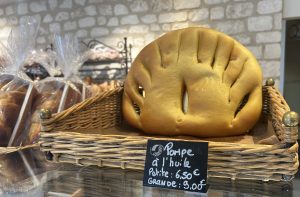
The 13 Desserts of a Provençal Christmas Eve dinner is said to represent Jesus and his twelve apostles. Eating it after the traditional meal after midnight mass . . . it is supposed to bring you good luck for the year to come . . . but you must eat a bit of ALL 13 if you want to guarantee a good year ahead.
I always imagined the 13 desserts of the important Provençal Christmas Eve dinner, to be all Esscoffier, fancy and complicated until I started to learn all about what this dinner course actually consisted of, and how simple it was to replicate. Turns out it is a whole lot easier to create than the steamed plum pudding and brandy sauce of the UK Christmas dinner.
I’ve never done this for a Christmas dessert as we normally have an iced sorbet type Bûche . . . my favourite from Le Fournil d’Antan. However, in my head, I always imagine what a beautiful tablescape this dessert would make . . . strewn artistically . . . sort of as in the image above with all the bits, with glasses, plates, linen napkins and bottles of after dinner liqueurs!
The most difficult aspect of this dessert is that you cannot just go the the local supermarket and shop for these bits. Most French families have their very own special producers that provide them with these special Christmas items year after year. Each family will also have their own special favourites that they always include, due to past family traditions handed down over the generations.

This will include & consist of-:
Fruit confit of various sorts
Dried fruits like figs & nuts
Fresh fruits . . . the juicy clementines of Corsica of the season
Chocolate olives (chocolate coated almonds shaped like olives)
Local Candies (like pate de fruit little fruit jellies dredged in sugar . . . like quince my favourite – black & white nougat)
Calissons . . . little tiny cakes made out of almond and melon
Nanette’s . . . little biscuits flavoured with orange blossom a specialty of Marseille
Pompe à l’huile ( a brioche-like cake enriched with olive oil, and orange blossom water) a very popular item in the Boulangeries of Provence during December). The cake should never be cut, just broken up and dipped into a sweet wine or for children a juice. Cut it and the saying goes, you then risk living a year of abject poverty! Different areas of Provence may have their own regional version of cake.
A special loaf that appears at this time of year also . . . not sure if it is included in the 13 but I would definitely include, is the spiky little hedgehog looking loaf, just a tiny bit sweet with figs and chestnuts . . . I love it with cheese.






